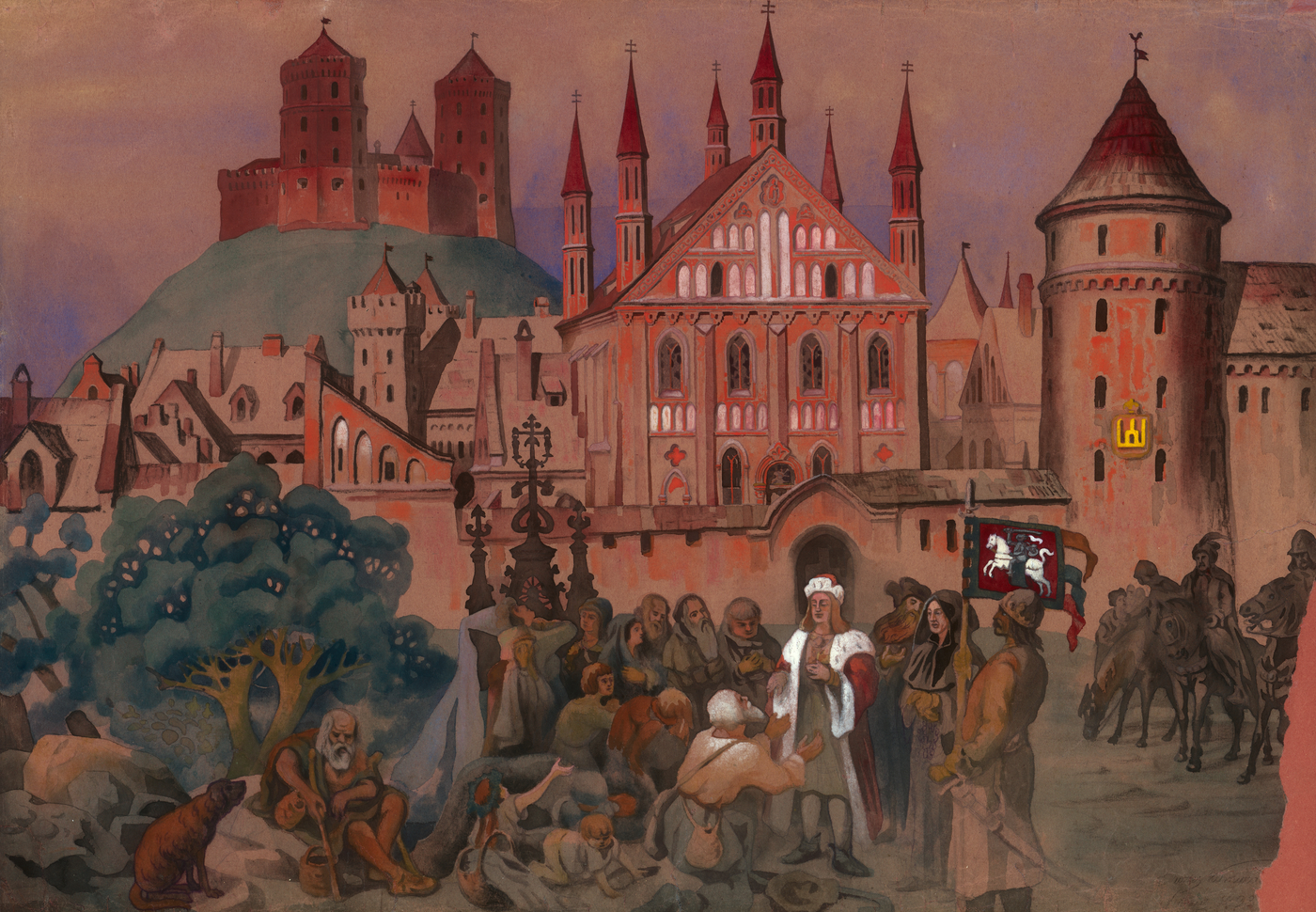Catacombs Beneath the Cathedral
The symbol of Lithuania’s Christianisation – the Cathedral – was built in a special location. In the times of the Grand Duchy of Lithuania, the bed of the Neris River was where the present-day Šventaragio Street is found; hence, the nice location in the green valley at the confluence of the Neris and Vilnelė rivers looked very different. There was the temple of the Thunderer (Lith. Perkūnas), one of the major pagan places of worship in Lithuania with an eternal flame where bodies of the Grand Dukes of Lithuania were cremated. Actually, historians are suspicious of these legends and there is no consensus on whether the Catholic shrine was built in the times of Duke Mindaugas or later.
One of the first masonry structures in Lithuania, the Cathedral, changed its appearance several times; however, today you will find some bricks dating back to the 14th century in its catacombs. After Lithuania’s Christianisation, rulers were also buried in the Cathedral, in the Kings’ Crypt. Here you can see a dark blackish log on which coffins of the Grand Dukes of Lithuania were placed for a few centuries; they later were moved to a mausoleum. The greatest number of secrets stored in the catacombs beneath the Cathedral were revealed in 1931, after the foundations had to be repaired following a spring flood – the remains of the wives of the Grand Dukes of Lithuania Alexander and Sigismund Augustus, Elisabeth Habsburgaitė and Barbora Radvilaitė, were discovered.
The 14th century: grey and legendary Vilnius
- Monument to Gediminas
- Catacombs Beneath the Cathedral
- Catacombs of the Palace of Grand Dukes of Lithuania
- Bishops’ Palace
- Pilies Street
- The Church of Saint Paraskeva and the Altar of Ragutis
- Medeinė
- St. Nicolas’ Church
- Site of the 14th Century Mounds
- Church of the Holy Spirit
- The Cathedral of the Theotokos in Vilnius
- The Crooked Castle and the Hill of Three Crosses
- Verkiai

